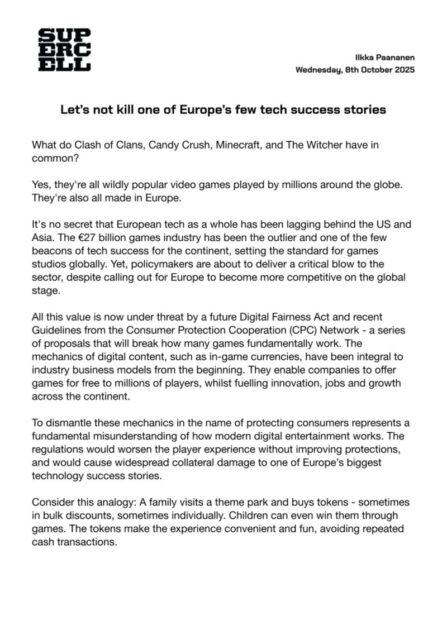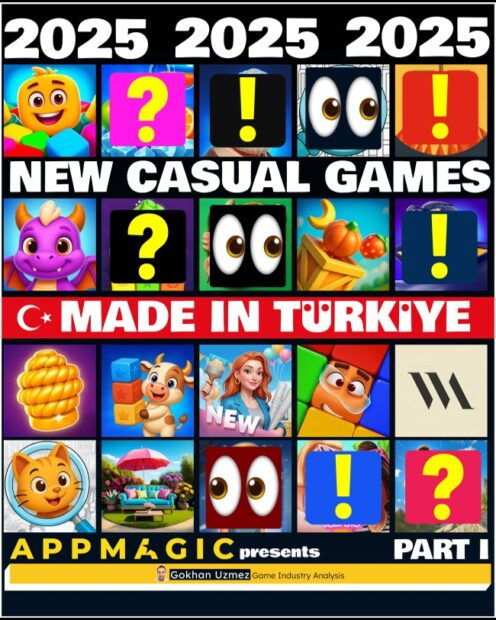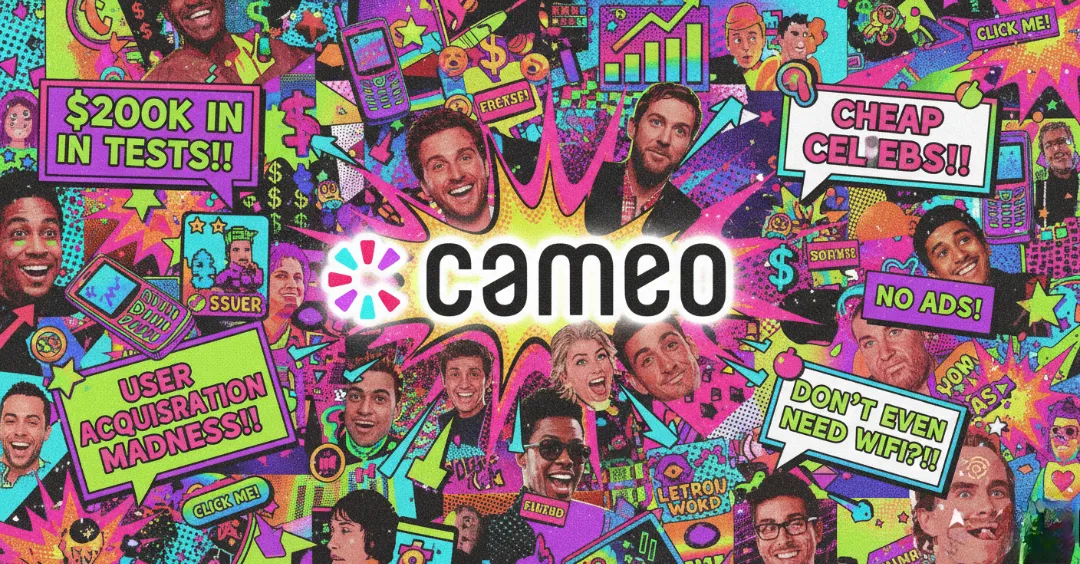
Using Cameo for UA: What $200K in Tests Taught Us
Journal 12 Bryan Cindell October 7
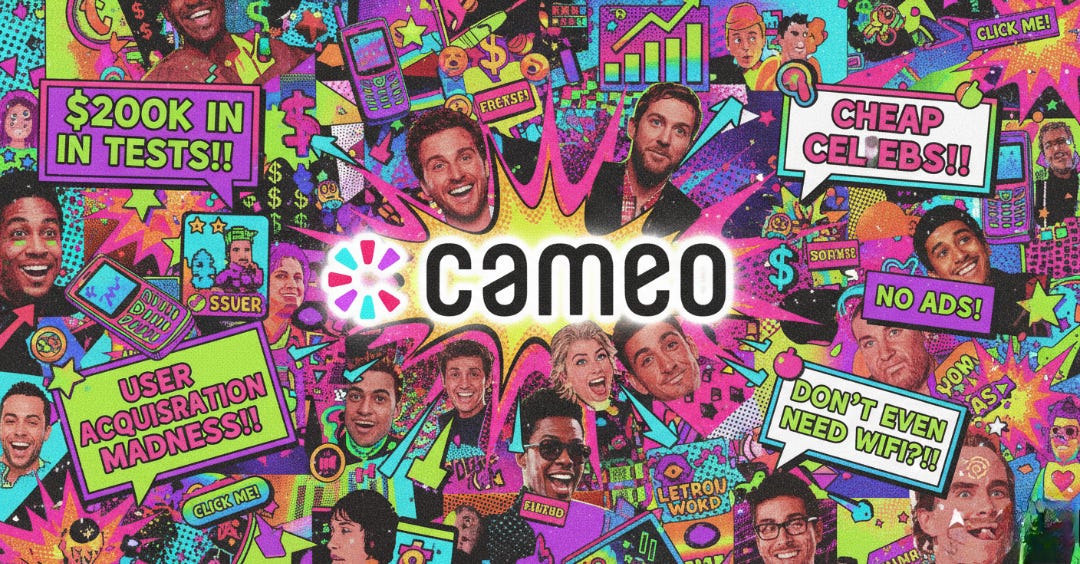
Most people use Cameo to get a celebrity shoutout. We used it to acquire players.
After spending over $200K on ~50 Cameo videos for UA, we found that it can be a surprisingly cost-effective, and creative, addition to your marketing mix. Here’s what we learned and how to make it work for you
What Even Is Cameo — and Why It Belongs in UA
Cameo started as a feel-good platform where fans could pay celebrities to record short, personalised videos – birthday wishes, roasts, pep talks, you name it. During the pandemic, it exploded. Stuck at home, people found joy in having a semi-famous person say their name.
At its peak, Cameo had over 400 employees and a full-on cultural moment. But as the world reopened, demand cooled. The company downsized to just 33 employees – and for a while, even our account manager vanished.
That’s when we started using it — not for birthdays, but for ads.
The timing was interesting: Cameo was quietly evolving from a novelty app into a creator-driven platform. You could now filter talent by category, response time, or location. Prices ranged from $10 shoutouts to $10K+ videos, spanning sports stars, TV personalities, musicians, and niche internet icons.
Today, Cameo is finding its second wind. The team’s rebuilding, account support is back, and they’re repositioning Cameo as more than a consumer toy — as a tool for brands and marketers. (Their recent AI-driven Peppa Pig activation says it all.)
That shift matters because it opens a new creative channel for UA teams:
✅ Low-friction video production with real personalities
⚡ Quick turnaround – sometimes same-day, usually under a week
💡 Built-in audience familiarity that cuts through ad fatigue
Cameo isn’t here to replace your production pipeline or influencer strategy – it’s a complement. Think of it as a fast, flexible way to test ideas that lean on personality, nostalgia, or cultural cues before you commit to a bigger spend.
Interestingly, despite this potential, Cameo isn’t actively marketing itself to game developers. Most gaming teams aren’t aware of how this platform can unlock fast, culturally relevant, and highly shareable creative. That’s part of why we saw such an opportunity to experiment with UA campaigns here.
The Spark: Royal Match and the Power of Familiar Faces
Our first spark came from watching what Royal Match was doing. Dream Games had built one of the most polished UA machines in mobile, but what really stood out wasn’t their polish – it was their personality.
They started running ads with Rick Hoffman from Suits, Akon, Frankie Muniz, James Murray, Joe Gatto, Lamar Odom, and a rotating cast of recognisable faces from TV, music, and pop culture.
At first, the idea seemed almost random – why mix celebrities from such different worlds? But it worked. You’d scroll past a dozen polished ads, then suddenly see Louis Litt shouting about a match-3 puzzle. It broke the pattern instantly.
What Dream Games understood is that people stop for people. A familiar face can stop the scroll and in UA, that’s half the battle.
(With Royal Kingdom, they’ve taken this Cameo approach a step further by producing high production, high quality ads with A-List celebrities. (Deconstructor of Fun wrote a great piece on this here if you want to dive deeper)
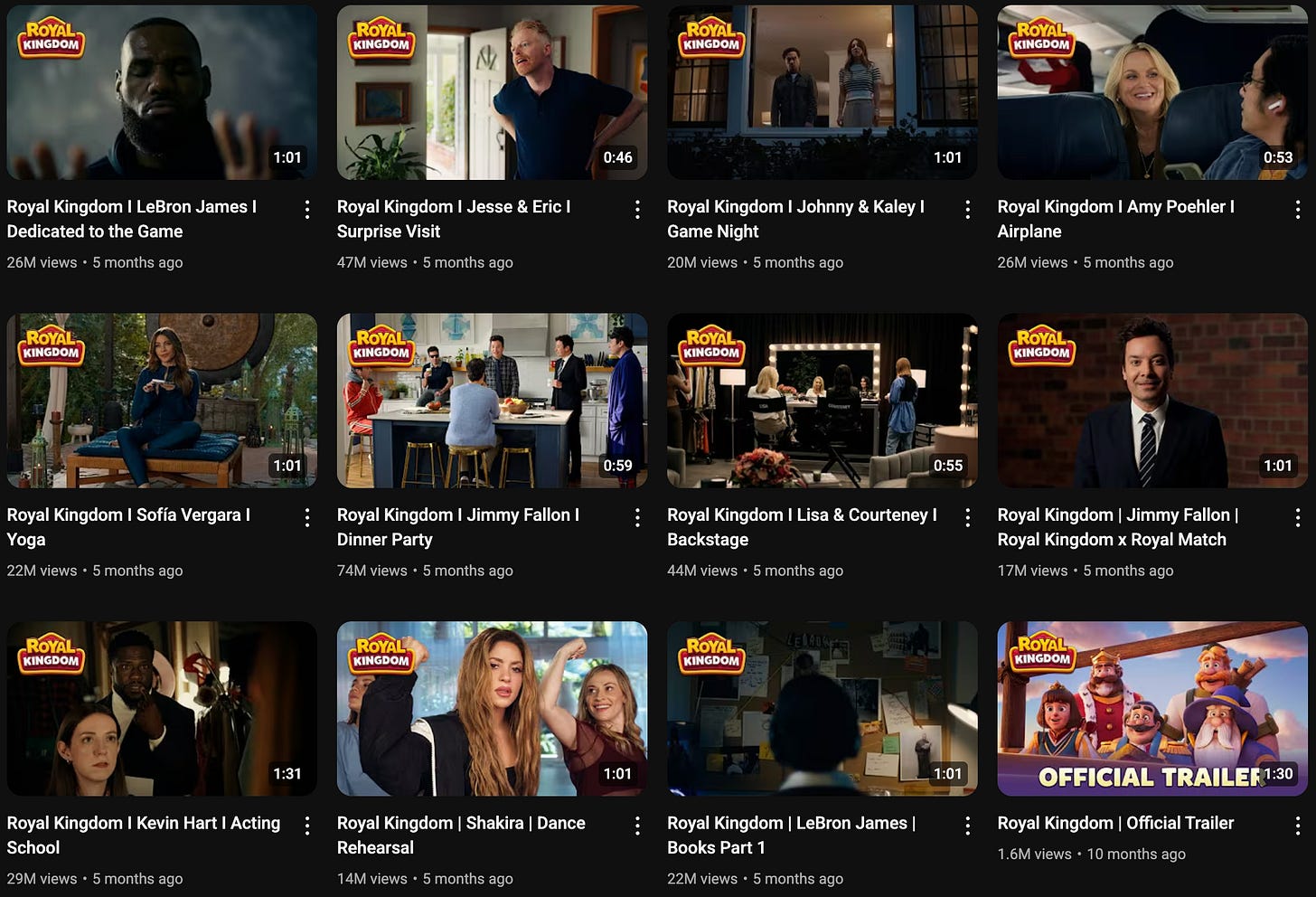
With that said, that was the nudge we needed. If it worked for the leading match-3 game, could it work for Chrome Valley Customs?
We were in the middle of trying to scale spend on Chrome Valley Customs and feeling the creative ceiling closing in. Performance was solid, but growth demanded new angles to unlock different audiences – something disruptive enough to stand out in crowded feeds, yet efficient enough to produce at scale.
That’s when we turned to Cameo.
Start with Data, Not Guesswork
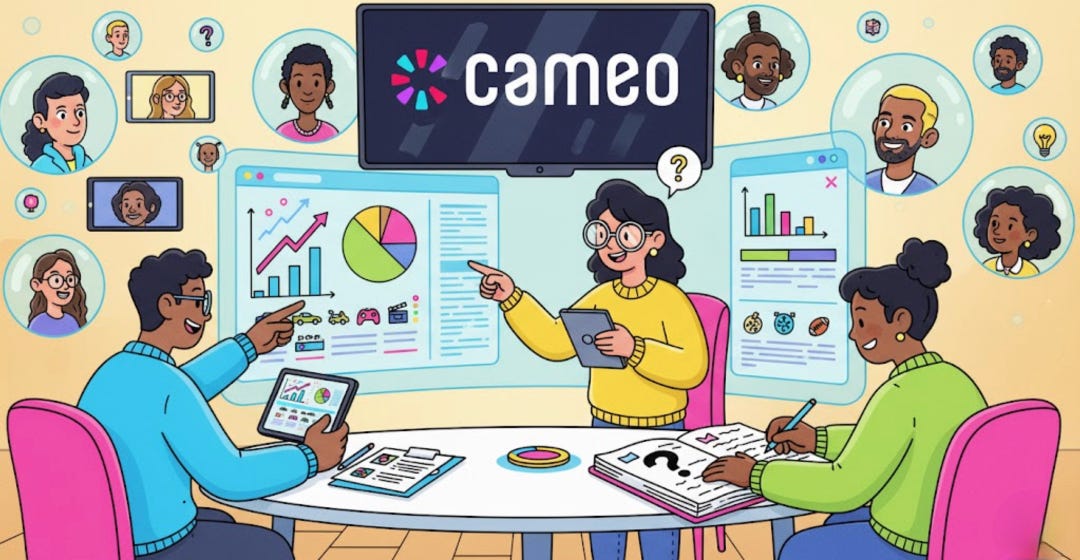
If you’re going to use Cameo for UA, don’t start by browsing random celebrities. Start with data.
Before spending a penny, run in-game or community surveys to understand what your players actually care about – hobbies, sports, shows, creators, memes, anything. Those insights will guide who you pick on Cameo and how you brief them.
When we did this, we found that a big segment of our audience was into motorsports – not just cars, but specific series and personalities. That gave us a direction: target creators in that space, and write scripts that play into those shared interests.
Cameo even helps on this front. Their newer dashboard includes audience insights for many creators, showing follower demographics, engagement stats, and niche relevance. Combined with your own player data, it’s a goldmine for narrowing down who to test first.
The key is to treat Cameo like any other UA channel – data in, creative out. Don’t guess. Let your player base point you toward the right voices, humour, and cultural hooks to explore.
That said, Cameo’s talent pool won’t always align perfectly with your data – but stay close to the theme and test broadly. Some of our best-performing videos came from creators we never would’ve predicted.
The Practicalities of Running Cameo for UA

Okay, so you’ve found your themes – your players love Pimp My Ride, Top Gear, or BBQ Pit masters – and you’re ready to test Cameo.
Let’s talk about the part nobody covers: costs, timelines, and sanity.
💸 Costs & Licensing
In total, we produced around 50 Cameo-based creatives, spending roughly $200,000. That doesn’t mean each video cost $4K – not even close.
Here’s how it really breaks down:
Cameo charges per creator, and pricing can vary wildly – from tens of dollars to tens of thousands, depending on name recognition.
Each booking includes a 15-day commercial license (which lets you use and edit the footage freely – e.g., adding subtitles, gameplay, or other UA elements).
If a creative performs, you can extend the license. We often pushed successful ones to 30 days or more, but only a handful ever made it past that mark profitably.
On average, without counting extensions, each creative landed around $2,000 all-in – including the Cameo cost and internal production time.
Performance-wise, we found Cameo creatives spend well for about a week before fatigue sets in. A few exceptions go the distance, but most follow that “one-week spike” pattern.
📋 Briefing Talent: What Works
Cameo has improved massively on this front. Their booking flow now prompts creators with:
- “What’s the goal of this video?”
- “Tone and style”
- “Filming requirements”
- “Things to avoid”
You can also choose between ‘Talking Points’ and ‘Exact Script’, and the character limit has been lifted from 500 to 1500 — a lifesaver for context.
A few tips from experience:
- Keep videos under 60 seconds and vertical (Meta still performs best for these).
- Be crystal clear with your talking points – don’t assume talent knows gaming lingo or UA context.
- Always hit key value props: Free to download, play offline, no ads. These lines consistently improved performance.
- If your game has clear visual cues (e.g., Chrome Valley Customs’ garages, tools, or cars), ask talent to include them in the frame. That visual connection to gameplay matters more than you think.
⏱️ Timelines
Here’s the reality of production speed:
- Cameo delivery: Allow up to 7 days for talent to deliver the video (though most arrive within 2–3 days).
- Post-production: Add another 7 days for your internal team to edit — trimming, subtitling, and cutting in gameplay.
So, you’re looking at roughly a two-week turnaround from booking to live creative. Pretty efficient compared to a custom shoot.
📱Channel Selection
For us, Meta was the clear home for Cameo creatives. Vertical, short-form, personality-driven videos perform best in feeds where people scroll fast — and Meta’s platform gives you both reach and engagement. While other channels are possible, we found that Meta consistently delivered the strongest results for this type of content.
🌏 Regional Plays
Another advantage we discovered is the ability to produce content for multiple regions. Cameo has a wide pool of talent across languages and geographies, which makes it easy to localize videos for different markets without the usual production headaches. This adds another layer of efficiency and reach to your campaigns. You do have to have the resources to check the content itself in said language so it’s something to think about.
🚧 Going Off-Platform (and Why We Stopped)
A few creators might suggest going off-platform to avoid Cameo’s 25% booking fee. It sounds appealing, but there’s a hidden tax: time.
When you go direct, you’re suddenly managing:
- Contracts
- Licensing periods
- Payment tracking
We tried it – and honestly, the marginal savings (maybe 15–20%) didn’t justify the added complexity. Cameo’s platform fee buys you structure, safety, and a paper trail. That’s worth it when you’re juggling dozens of videos and licenses.
That said, there is a flip side. Some of the off-platform creators delivered work at a noticeably higher production quality. A few had their own mini film crews or editors, and the difference showed. So while it’s more hassle, if you’re targeting a specific talent and quality bar, it can be worth exploring selectively. (Example from Steve Darnell below)
Familiarity Breeds Opportunity
When you collaborate with creators on Cameo, you’re not just buying one video – you’re building a relationship. If a creator’s first video performs well, that’s your signal to double down. They’re now genuinely excited about your game, more likely to go above and beyond, and already familiar with your brand. That familiarity pays off later – if the partnership works, it becomes much easier to scale up to something bigger or more integrated down the line.
Our first video with Xzibit was a huge success – and it wasn’t a surprise. He ranked high in our survey data, and Pimp My Ride scored strongly too. The nostalgia of seeing Xzibit back, restoring cars, instantly clicked with our audience.
What made it even better was how much he loved the project himself. Xzibit wasn’t just showing up to read a script – he was genuinely hyped about the game and ended up becoming a deeply involved player. His creative went on to become one of the few evergreen pieces made from Cameo, and his enthusiasm helped spark a full 360° marketing campaign.
All told, around 45 different creatives came out of that partnership – all from a single Cameo video. That’s the hidden benefit: when the fit is right, it can grow into something far bigger than you planned.
Closing Thoughts
Most people see Cameo as a novelty – a place for birthday shoutouts or fan videos. We found it’s actually a fast, flexible way to feed real, personality-driven content into UA production.
Over 50 videos and $200K later, it’s clear it can be both cost-effective and strategically valuable. You get authentic delivery, cultural relevance, and recognisable faces – all content that slots straight into your ad creatives without the overhead of traditional shoots.
The bigger upside is what comes after the first video. When you approach it with data, clear creative intent, and structure, Cameo can turn into genuine creator partnerships – the kind that evolve into long-term campaigns and even full 360° initiatives.
Cameo isn’t just a platform for shoutouts. Used the right way, it’s a way to inject fresh, proven content into your UA pipeline – boosting performance, saving time, and unlocking creative ideas you might never have tried otherwise.






